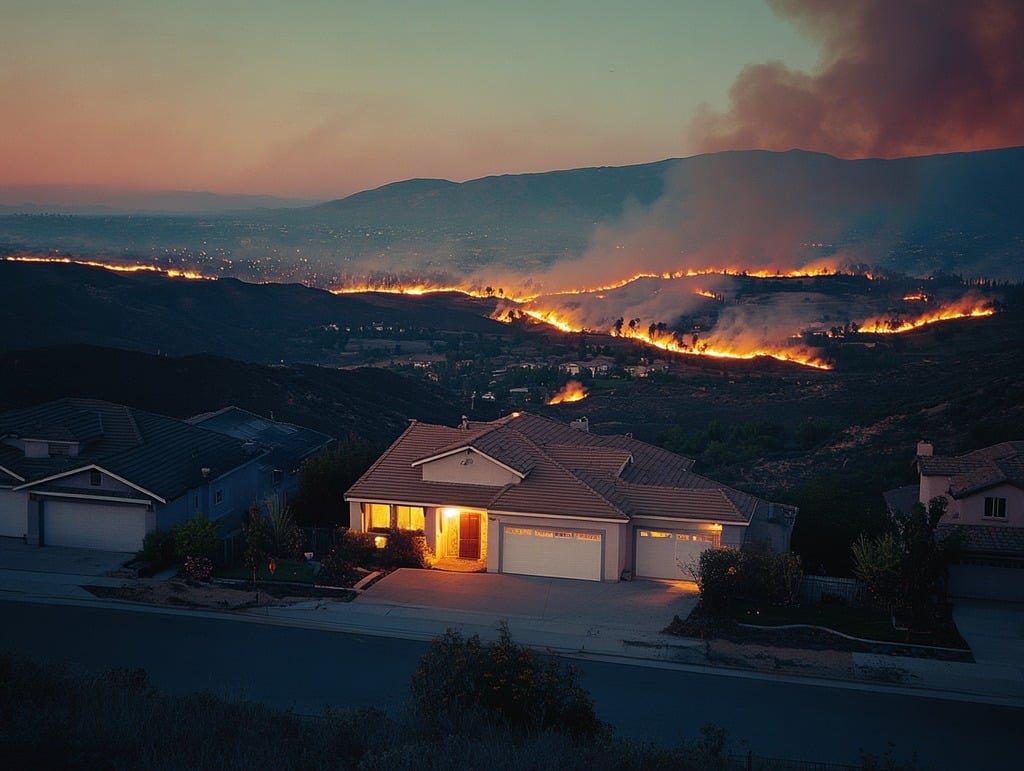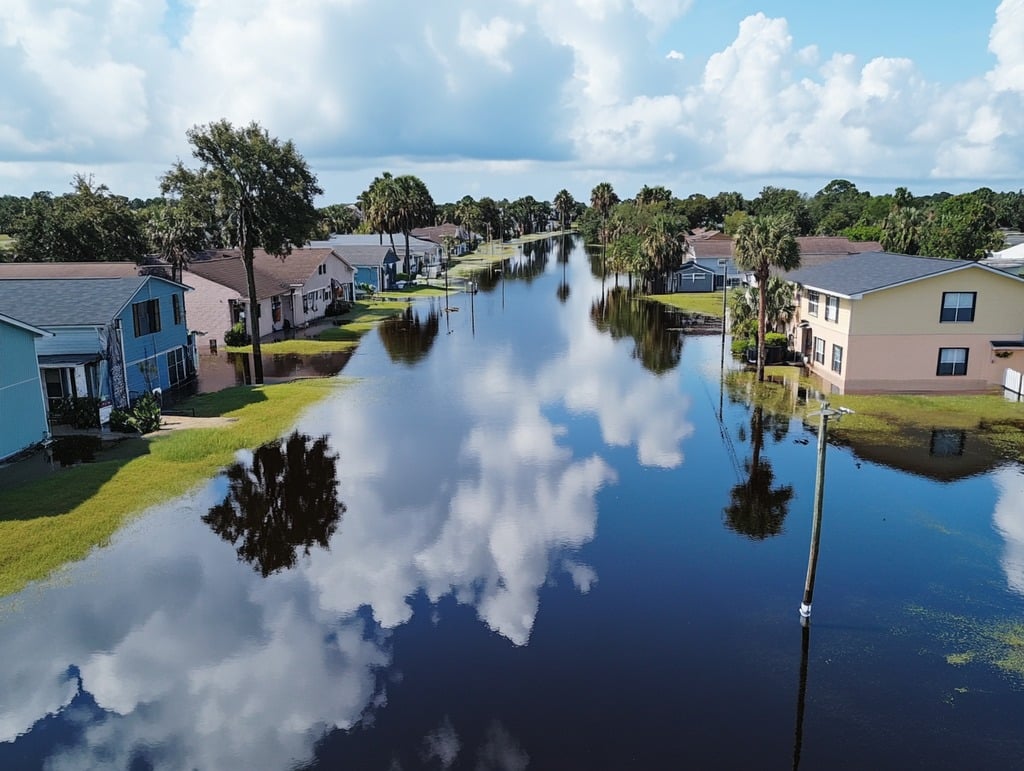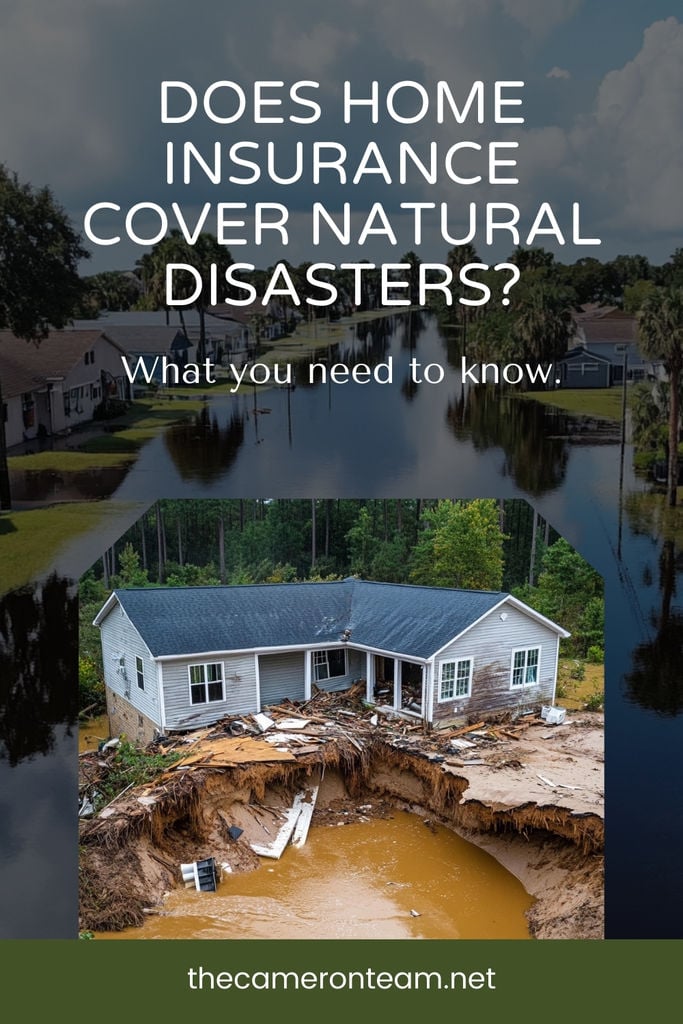Natural disasters can strike at any time, causing significant damage to homes and property. As a homeowner, you might assume your home insurance will cover these events, but it’s not always that straightforward. Policies vary, and what’s covered can depend on where you live and the types of coverage you choose. So, does home insurance cover natural disasters? Let’s dive in to understand the ins and outs of natural disaster coverage in standard home insurance policies.
Important: This information is intended for home buyers doing their preliminary research. Always read your insurance policies and speak to your insurance broker for the most accurate information for your current situation. Every insurance policy is different.
What’s Typically Covered in Home Insurance?
Most standard home insurance policies, also known as HO-3 policies, cover damage to your home and belongings under certain “perils.” These are specific types of events, like fire, theft, or vandalism, that are usually covered by the insurance. Here’s a quick breakdown of what’s generally covered:
- Fire and Smoke Damage: Commonly covered and applies to both wildfires and house fires.
- Windstorms and Hail: Damage from heavy winds or hail storms is typically included, though this can vary by location.
- Lightning Strikes: If lightning causes damage to your property, it’s often covered.
- Explosion: Most policies cover damages caused by explosions, whether from gas leaks or other sources.
While these events are usually included, coverage for natural disasters isn’t always guaranteed. Some specific types of natural disasters may require additional coverage.
Natural Disasters That Are Typically NOT Covered
Here’s the catch—most home insurance policies don’t cover certain types of natural disasters without added riders or separate policies. Here’s a closer look at some common natural disasters that aren’t covered by default:
- Floods
Flood damage is almost never covered under standard home insurance. Whether it’s caused by a hurricane, heavy rainfall, or a river overflowing, you’ll likely need a separate flood insurance policy. This can be purchased through the National Flood Insurance Program (NFIP) or through private insurers. - Earthquakes
Earthquake damage is also usually excluded from standard policies. If you live in an earthquake-prone area, you may want to add an earthquake insurance policy. These are often offered as add-ons by major insurers or through specialized providers. - Hurricanes
This one’s a bit complicated. While some hurricane-related damage, like wind, might be covered, flooding from a hurricane is not. In coastal areas, insurers might even impose a separate hurricane deductible, which is higher than the standard deductible. - Landslides and Mudslides
Damage from landslides and mudslides is generally excluded. This is because they’re considered “earth movement” events, which require separate coverage. You may find some protection under specialized landslide insurance policies, but these can be pricey and are not widely available. - Wind and Hail in North Carolina
In certain states, such as North Carolina, damage from wind and hail may not be included in standard home insurance policies. This is due to the high risk of storms in coastal regions. Homeowners in North Carolina often need to purchase a separate wind and hail policy to cover this type of damage. These policies are typically offered through the North Carolina Insurance Underwriting Association (NCIUA) or through private insurers. - Wildfires (In Certain High-Risk Areas)
Although wildfires are often covered, homes in high-risk areas like California may face limitations. In some cases, insurers won’t renew policies for homes in areas prone to frequent wildfires. California has created a Fair Access to Insurance Requirements (FAIR) Plan as an alternative for those in high-risk areas.
How to Get Additional Coverage for Natural Disasters
If you live in an area prone to specific natural disasters, you’ll want to consider purchasing additional coverage. Here’s how:
1. Flood Insurance
- How to Get It: You can purchase flood insurance through the NFIP or a private insurer.
- Who Needs It: Recommended for people in flood-prone areas, but keep in mind that floods can happen anywhere.
- Cost: The cost of flood insurance depends on your home’s location, the type of flood zone you’re in, and your home’s structure.
2. Earthquake Insurance
- How to Get It: Many insurance companies offer earthquake policies as an add-on, or you can go through a dedicated provider.
- Who Needs It: Primarily needed in earthquake-prone states like California, Washington, and Alaska.
- Cost: Earthquake insurance can be expensive, with premiums that vary depending on proximity to fault lines and home construction.
3. Hurricane and Windstorm Insurance
- How to Get It: In some states, insurers offer windstorm insurance separately, or you may need to find coverage through a state-backed plan.
- Who Needs It: Essential for homeowners along the Gulf Coast, Atlantic Coast, and other hurricane-prone regions, as well as North Carolina residents who need wind and hail coverage.
- Cost: The premium often depends on your home’s location, age, and construction materials.
4. Landslide Insurance
- How to Get It: It’s not widely available, but you may find options through specialty insurers.
- Who Needs It: Important for homes built on hillsides or in areas prone to mudslides.
- Cost: Landslide insurance is generally costly due to the high risk associated with earth movement.
Factors to Consider When Evaluating Your Coverage Needs
When it comes to natural disaster coverage, there’s no one-size-fits-all solution. Here are some key factors to consider:
- Location: If you live in a high-risk area, you’ll likely need additional coverage.
- Home Value: Higher-value homes may benefit from added coverage to avoid paying out-of-pocket for repairs.
- Cost of Premiums vs. Deductibles: Higher premiums often come with lower deductibles, so weigh the costs carefully.
- Government Programs: Some areas have government-backed programs like the NFIP, which can provide affordable options.
FAQs About Home Insurance and Natural Disaster Coverage
Q. Do I need separate insurance for every type of natural disaster?
A. Yes, in most cases, you’ll need separate policies or endorsements for natural disasters not covered by your standard policy, like floods and earthquakes.
Q. Is hurricane damage covered by my home insurance?
A. Hurricane damage related to wind may be covered, but flood damage from hurricanes isn’t covered by standard policies.
Q. What should I do if I can’t get coverage in a high-risk area?
A. If private insurers deny coverage due to high risk, check if your state offers a FAIR Plan, North Carolina Joint Underwriting Association (NCJUA), or other state-backed insurance options.
Q. Are wildfires covered by standard home insurance?
A. Generally, yes, wildfires are covered. However, in high-risk areas, you may face limits or need to seek alternative options.
Q. Does North Carolina home insurance cover wind and hail?
A. In North Carolina, wind and hail damage often require a separate policy due to the high risk associated with coastal storms. Homeowners in the state should look into the NCJUA or private wind and hail policies.
Wrapping It Up
While home insurance can be a lifesaver in many situations, it’s important to know its limits, especially when it comes to natural disasters. Most standard policies cover common perils like fire, theft, and wind damage, but for disasters like floods, earthquakes, and landslides, you’ll need extra protection. Take the time to assess your home’s risk factors and consider adding additional coverage if you live in a high-risk area. With the right insurance, you can have peace of mind knowing you’re prepared for whatever nature throws your way.
Want more peace of mind? Talk to your insurance agent about customizing your policy to make sure you’re fully protected. After all, the cost of added coverage is often worth it compared to the financial impact of a major disaster.
Need the name of a reputable local home insurance agent? We invite you to reach out to us. It’s best to get a few quotes when purchasing a home in Southeastern North Carolina.







